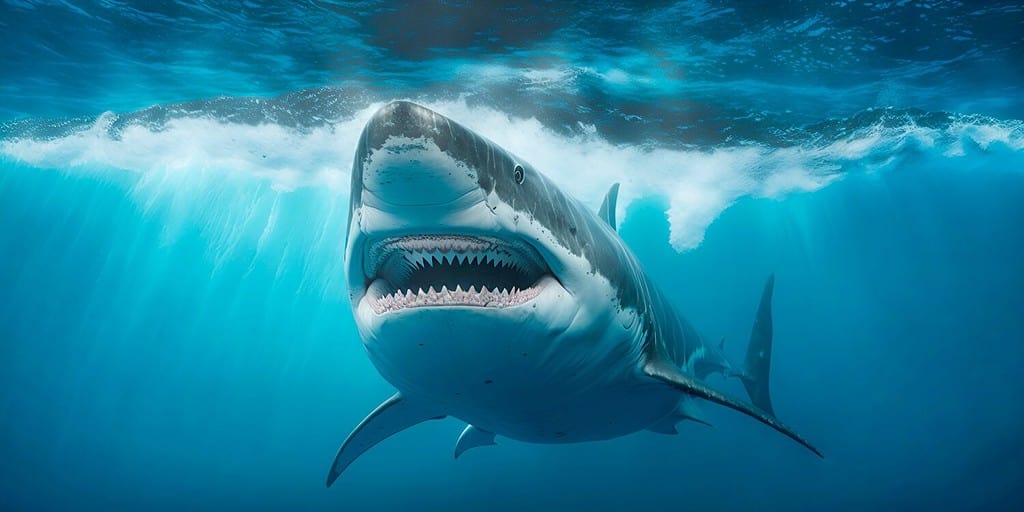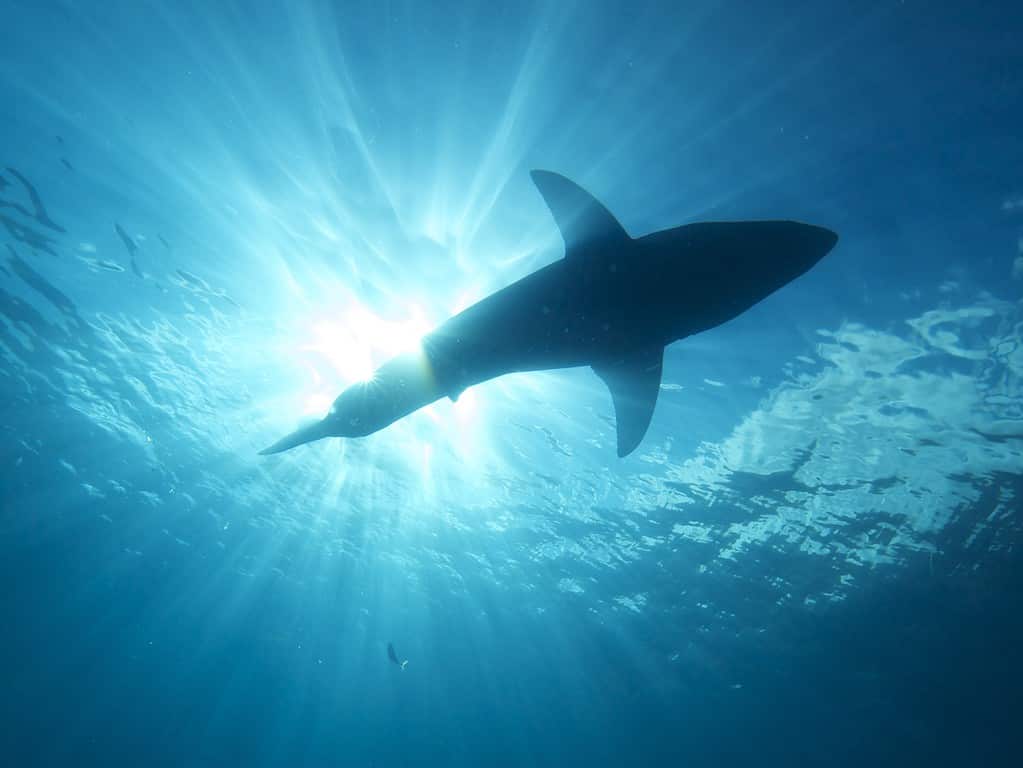Continue reading for our analysis...

Possibly not the most risk-free thing to do around great white sharks! This clip from 2008 has already been viewed over three million times. As the video below shows, it can be dangerous to try to pet a great white shark even if you are experienced around them and are on a boat!
How Do Great White Sharks React to Human Presence?
Great white sharks are responsible for more attacks on humans than any other species of shark. However, this does not mean that they are out to get us. Scientists believe that they are curious creatures who may be simply checking us out. The problem is that these guys explore things with their mouths and may even take a ‘test bite’ to see what we are. They have sensitive taste cells in and around their mouth.

Great white sharks are responsible for more attacks on humans than any other shark.
©Sergey Uryadnikov/Shutterstock.com
At other times, sharks may mistake us for food. A diver in a wet suit can look very much like a seal which is a shark’s natural prey. There is some evidence that younger and therefore less experienced sharks are more likely to bite humans because their vision is worse and they have not learned that humans are not food!
What Precautions Should Be Taken When Encountering Sharks?
Florida Museum has issued some excellent advice on how to avoid getting attacked by sharks. The top tip is to stay with another swimmer/diver. Sharks are more likely to approach humans when they are on their own. Stay close to the shore and be very careful around steep drop-offs because this is where sharks like to hang out.

Great whites are able to see brightly colored swimsuits and are attracted to splashing.
©Willyam Bradberry/Shutterstock.com
Don’t wear shiny jewelry as this can look like sunlight glinting off fish scales and makes you look like a meal!
Avoid wearing brightly colored or high-contrasting clothing as these can be seen particularly well by sharks. Don’t splash around either as this creates a low-frequency sound that is very like a fish in distress. This is something that a shark will be very interested in!
Finally, if you are alerted that there are sharks in the water, get out as calmly and as slowly as possible.
How Large Do Sharks Get?

Sharks have between 50 and 300 teeth.
©LuckyStep/Shutterstock.com
Sharks come in a variety of sizes. The largest, known as the whale shark, can reach up to 60 feet in length. On the other end, the smallest can fit in your hand. The great white shark falls somewhere in between these extremes.
The largest recorded great white shark is a female named Deep Blue. The shark gained instant fame through the 2014 episode of Shark Week titled “Jaws Strikes Back.” Deep Blue measures an impressive 20 feet in length and is estimated to weigh around 4,500 pounds.
What Do Sharks Normally Eat?

Sharks mostly eat fish and other sea creatures.
©Elias Levy / CC BY 2.0 – License
Great white sharks are apex predators known for their formidable hunting abilities. Their diet primarily consists of marine mammals such as seals and sea lions, although they are also opportunistic feeders and will consume a variety of other prey, including fish, turtles, seabirds, and even smaller sharks.
These majestic creatures exhibit unique hunting behavior characterized by stealth, speed, and precision. Great whites often approach their prey from below to take advantage of the element of surprise. With incredible bursts of speed reaching up to 35 miles per hour (56 km/h), they launch themselves out of the water in an explosive attack known as breaching.
To aid in catching fast-moving prey, great white sharks possess rows of serrated teeth that can number over 300 at any given time. These sharp teeth enable them to deliver powerful bites while minimizing damage to their own mouth.
Despite being fearsome hunters within their ecosystems, it is important to note that humans are not a preferred or natural part of the great white shark’s diet. Instances where human encounters occur typically stem from cases of mistaken identity or curiosity rather than predatory intent.
Thank you for reading! Have some feedback for us? Contact the AZ Animals editorial team.






